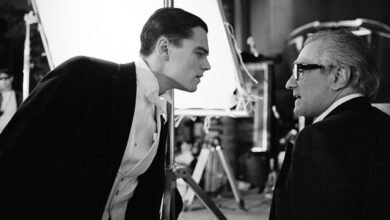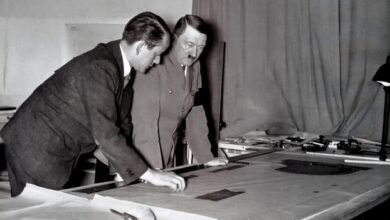Julie Taymor on turning The Lion King into the most successful musical ever

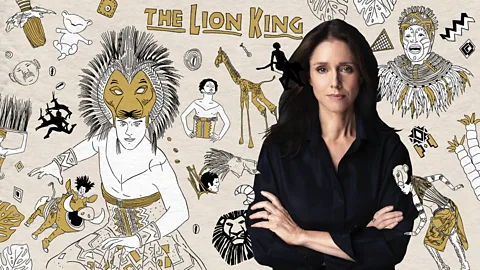 Emmanuel Lafont
Emmanuel LafontDisney’s stage version of their hit film is an unmatched global phenomenon. Twenty-seven years on from its premiere, its director discusses why it was a big risk that paid off 10 billion-fold.
The Lion King musical is a beast of a show – captivating US audiences since 1997, it is the highest-grossing production of all time, in theatre or in film, taking over $10 billion (£7.68 billion) worldwide. It’s currently celebrating 25 years in the West End, hits 27 years on Broadway next month, and has been staged all around the world – from South Africa to South Korea, Australia to the United Arab Emirates – visiting every continent except Antarctica. “The penguins don’t need us,” quips Julie Taymor, the theatre, film and opera director and designer whose unique vision helped the musical spring into life on stage – proving that theatrical versions of Disney movies could not only be hugely profitable, but could do so while being artistically inventive in their own right.
Warning: This article contains language that some may find offensive
But when Disney initially approached her about directing a live version of their adored 1994 cartoon film, Taymor didn’t know what to say: she hadn’t actually seen The Lion King. “I thought, well, why not, let’s go look at the movie,” the still youthful-looking 71-year-old recalls, speaking to me via Zoom from the US. “And I was really taken; I loved it.” The challenge of adapting an epic, wide-screen story excited her: how, she recalls wondering, would you put hundreds of animals on stage? How could you create a stampede of wildebeest live in front of an audience?
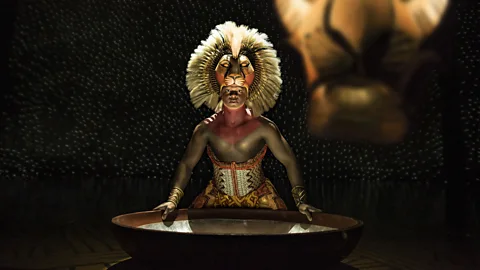 Disney
DisneyThe answer was by embracing a distinctly theatrical approach: The Lion King uses masks and puppetry to put the animals of the African savannah onstage, and to tell the coming-of-age story of Simba the lion, from cub to king. Taymor designed all the costumes and masks, and the breakthrough moment was deciding to let the audience see the mechanics of how each character is made – to invite them to suspend their disbelief, and to use their imagination in helping create that whole world onstage.
“I went through every animal: okay, we’ve got a giraffe, I’ll put the neck on top of the head of the dancer, but you’re going to see the dancer’s face, you’re going to see where the stilts are wrapped to the dancer’s hands…” remembers Taymor gleefully. “There is no attempt to hide the human being behind the masks or inside the puppet,” she says, a technique she dubbed the “double event”, allowing performers to be both animal and human simultaneously.
So you can see Simba’s emotion on the actor’s face, while a mask on top of his head reminds the audience that this is, in fact, a lion; Timon the meerkat is a puppet, drawing on the Japanese Bunraku puppetry tradition where you can fully see the person behind him, controlling his movements. Trays of grasses on performers’ heads evoke swaying grasslands, while whole flocks of gazelles are created by a chorus wearing puppets on their heads and arms at the same time.
“I wanted to do what theatre does best,” recalls Taymor. “Film hides the strings: we know it’s fake, but we’re pretending that it’s really there – that the Titanic is really on the ocean, that it’s really sinking. Whereas in the theatre, we will enjoy seeing a little puppet of a boat, and a big ocean of silk… this is the power of theatre. The audience is not played down to – they’re brought into the game.”
A visionary choice
Today, it’s hard to imagine The Lion King being done any other way – but it wasn’t all smooth sailing. And even getting the call from Disney was a surprise to start: while Taymor had already made a name for herself within theatrical circles – her musical fable about a jaguar cub who transforms into a boy in the Uruguay jungle, Juan Darién, had netted five Tony nominations in 1996. But aside from that big cat connection, her work’s distinctly international flavour and its heavy use of masks and puppetry inspired by Indonesian and Japanese traditions didn’t necessarily scream family-friendly commercial juggernaut. Nonetheless, Thomas Schumacher, the new head of Disney Theatricals, had a hunch Taymor’s highly visual style of theatre could be just the thing to bring The Lion King to the stage.
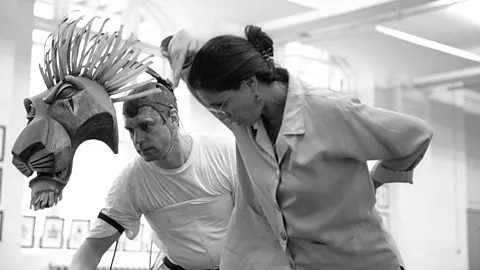 Disney
DisneyIt would be a very different story with The Lion King – which the New York Times immediately praised on its 1997 world premiere as being “miles away from standard Disney fare”. Yet Taymor recalls that, from the very beginning, the head honchos at Disney were remarkably open to whatever ideas she cooked up. “They didn’t actually have a very strong idea at all about how to do this, which was quite great – it left the door wide open.” The door was so wide, in fact, that they weren’t even sure The Lion King would be a Broadway musical; as Taymor recalls, early discussions kicked around the idea of a stadium show, or something at a planetarium.
Julie Taymor’s Five Culture Shifters
Akira Kurosawa – Rashomon (1950)
I go back to when I saw my first “foreign film” in Paris, when I was 15 years old. I watched Rashomon and that changed my life. Kurosawa! He is the reason, his movies are the reason, that I became a film director.
Peter Brook – A Midsummer Night’s Dream (1970-71)
I remember being at Oberlin College and taking a bus 15 hours with my fellow schoolmates to New York to see Peter Brook’s Dream. It had a powerful effect on me.
During the Vietnam war, when I was in high school, I became very aware of Bread and Puppet Theatre – Peter Schumann’s giant puppets that were used as political protest in marches in the streets of New York and Washington. The power of puppetry was really apparent.
Federico Fellini – Nights of Cabiria (1957)
One of my favourite filmmakers, I love Fellini’s sensibility and love of life.
Various – Indonesian theatre including Javanese shadow puppetry
I have never seen theatre as potent, powerful, and overwhelmingly theatrical as I have in Indonesia. It’s part of the everyday fabric of society.
But Taymor does recall how an early workshop showcasing the “double event” mask concept spooked some of the money men. Michael Eisner, Disney’s chief executive, Joe Roth, the studio chief, and what Taymor describes as “a bunch of the top people at Disney – but not theatre people” all came to see what she was cooking up. But the masks were too big; the costumes were unfinished; one of the puppeteers seemed determined to upstage his own puppet… “I got major doubt from the movie guys,” admits Taymor.
Her response was: “OK, let’s do a test – because I don’t want doubt, and I have nothing to sell. If you don’t think the puppetry and the double event masks are right, we’ll do something else.” She put together three different, fully realised visions for The Lion King: a commedia dell’arte approach, with half masks that were smaller and more human; a Cats-style version, with face-paint, and her double event approach, with the masks on the head.
“All three worked,” says Taymor. “So I said to Michael Eisner ‘which one do you want?’ He said ‘let’s go with your original concept. It’s risky, but the bigger the risk, the bigger the payoff.'” It was a leap of faith that surely helped the musical become the success it is – and surely also helped pave the way for other puppet-starring theatrical hits, from War Horse to Life of Pi, Encores!’s recent Broadway revival of Into the Woods or the Royal Shakespeare Company’s new stage version of Studio Ghibli hit My Neighbour Totoro.
The most significant tweaks
The Lion King musical may be most famous for its visual style, but Taymor’s journey started not with the look of the piece, but with the story, which she worked on with writers Roger Allers and Irene Mecchi. A brisk 88-minutes long, the movie needed to be expanded, Taymor felt, to sustain a two-act musical.
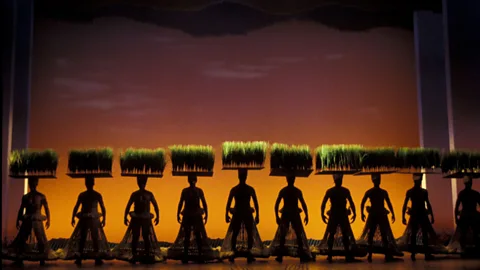 Disney
DisneyAt one point in the development process, she came up with a whole new, high-concept second half, where Simba ended up in a Las Vegas style city in the desert. “It was very Broadway – there was a pussycat lounge with all these lionesses and lounge lizards, and a jaguar who is a car… Simba becomes a boxer, and is made into the lion king. It was really kind of crazy, and Tom [Schumacher]’s mouth just dropped open.”
Disney may not have known what they wanted – but they knew they didn’t want that. In the end, the musical follows the film’s story closely, although Simba’s years in the wilderness with Timon and Pumbaa are expanded, with the young lion having to rescue his friends from a waterfall. Taymor says she was inspired by various archetypal coming-of-age and prodigal-son narratives. “If the hero is going to go and then come back as the lion king, what does he have to experience to earn that right?”
Then there was also some urgent work to be done on the female characters. “The female characters were not profound or deep in the original, so I said ‘we gotta change this’,” remembers Taymor. Rafiki, the baboon, became more central to the story as a female shaman or Sangoma, while Simba’s love interest Nala is given more focus, stage time, and more agency.
Another eureka moment along the way came with the music. Obviously, Elton John’s soundtrack to the animation features some of the catchiest Disney songs ever (The Circle of Life, Hakuna Matata, Can You Feel the Love Tonight?). But, beloved as they are, there were not enough of them for a whole show.
The film also featured music by South African composer Lebo M, who along with Hans Zimmer released a record called Rhythm of the Pride Lands in 1995, featuring more traditionally South African music sung in languages such as Xhosa, Swahili, Sotho and Zulu. When Schumacher gave this record to Taymor, the choral nature of the singing unlocked something in her imagination: “Now I had my population – I had the possibility to have a chorus of birds singing, a chorus of zebras dancing! This was very thrilling.”
Lebo M was brought into the project, and provided several more new songs for the show. “Lebo became an equal composer to Elton, and brought that other side – the African spiritual side – to the music, in songs like They Live in You, Shadowlands… These are very important to the musical of The Lion King.”
A step forward for musical theatre
Showcasing African languages and choral singing styles in the show “wasn’t really for political reasons,” says Taymor, “it was more that it was beautiful. It was moving. It sounded great.” But it did have an impact on casting, with Taymor stipulating that The Lion King should have “a predominantly African-American or African cast”, with only the fools (Timon and Pumbaa; Zazu) or the villain (Scar) played by white actors. And that in turn has had a notable knock-on effect in providing opportunities for several generations of non-white performers, helping diversify the world of commercial musicals.
“There’s no doubt that The Lion King, 27 years ago in America, and 25 years ago in London, was doing something very few other musicals had done – it wasn’t about race, but it brought in the talent of this huge pool of actors that weren’t necessarily going to be used in the white musicals at the time. We all feel very proud about that.”
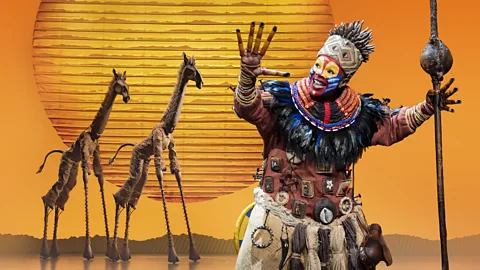 Disney
DisneyNonetheless, Taymor is still a white American woman telling a story set in Africa, through a fusion of styles that draws on many different performance traditions, from Japanese puppetry to African masks. If it was made today, there might well be questions about cultural appropriation.
Taymor would refute any such accusations. “When you just lift up a style of theatre and plunk it down… maybe you can say that’s inappropriate. But inspiration, techniques, and styles have [always] criss-crossed across the planet.” She is keen to point out that there is absolutely zero Japanese Bunraku puppetry or Balinese shadow puppetry in The Lion King – there are only techniques inspired by those traditions. “We borrow. It’s the beauty of what we share as humans.”
And Taymor was fully immersed in exploring such techniques from the very start of her career: after college, she had a fellowship to study theatre in Eastern Europe, Indonesia and Japan. She intended to be in Indonesia for three months – and stayed for four years. “It changed my life,” she says. “As an artist, I was born there. I was lucky to be in Java and Bali before the onslaught of tourism, and saw a culture where theatre was the most powerful form of entertainment and education. It was the most fundamental thing that you could participate in.”
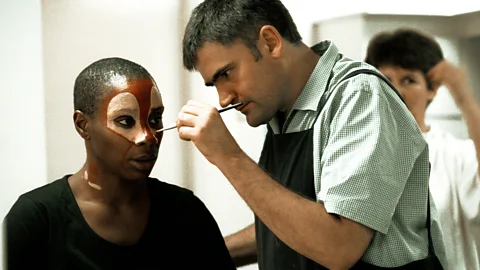 Disney
DisneyAt just 21, she set up her own theatre company there and worked with Sumatran, Balinese and Javanese mask dancers, actors, puppeteers and musicians to create and tour her own shows – productions she’d eventually bring to Western audiences, too.
Broadway can be a cruel mistress – as Taymor would later discover with the ill-fated Spider-Man musical, Turn Off the Dark. If The Lion King was the Broadway dream, Spider-Man was the ultimate nightmare: a stunt and tech-heavy show with music by Bono and The Edge, it went wildly over-budget and its opening was much-delayed, with several performers injured in previews. It also became mired in artistic differences that saw Taymor replaced as director; she later ended up in a legal battle with the producers over royalties that was settled out of court.
Such extreme triumphs or disasters are pretty rare – but you can never really tell if a show has got that special magic until it’s in front of an audience. Still, when it came to The Lion King, Taymor remembers a sense that something special was happening during rehearsals. “We had the puppet room, the choreography room, my main rehearsal room… during our breaks, I’d wander into the choreography rooms and my mouth would drop. Or I’d wander into the puppet workshop and see how they were bringing them to life. Or they would all come into my room and say, ‘holy shit, look at the giraffes’. We were our own audience, and we got excited.”
The show continues to excite audiences today – well over a hundred million people have seen The Lion King. But the first real moment Taymor got an inkling of just how successful the musical might be was at its first performance. The production has always opened with the cast of animals coming in through the auditorium – zebras, cheetahs, gazelles and giraffes moving down the aisle and through the audience. It’s a famous element of the show now, but it took early audiences by surprise, in the very best way.
“In the first performance, people were screaming when the animals came down the aisle – we didn’t expect that. We were so overwhelmed by the audience reaction, we just started crying,” Taymor recalls. They had a hit – and a new kind of musical was born.
The Lion King is at the Lyceum Theatre, London and the Minskoff Theatre, New York.
Source link


